Spamtown USA
in Food Trivia, Locations Trivia No Comments »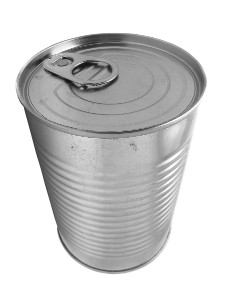 Spamtown USA is the nickname given to Austin, Minnesota, a town full of spirit and community pride. Austin acquired its name from one of its original settlers, Austin Nichols. This town is home to the Hormel Foods Corporation, the maker of the world’s supply of Spam, as well as a variety of other products.
Spamtown USA is the nickname given to Austin, Minnesota, a town full of spirit and community pride. Austin acquired its name from one of its original settlers, Austin Nichols. This town is home to the Hormel Foods Corporation, the maker of the world’s supply of Spam, as well as a variety of other products.
Spam, once touted as the miracle meat in a can, was developed in 1937. This clever meat product did not need to be refrigerated and was created from a mixture of ham and pork that was chopped and flavored. Unfortunately for its makers, competitors honed in on the market and presented fierce competition initially.
The Hormel Company created a contest to come up with a catchy name for their product in an attempt to garner more of the canned meat market. Obviously, the winning entry was “Spam” and the winner received one hundred dollars for the prize. A singing commercial, one of the first, followed in 1940.
Read the rest of this entry »
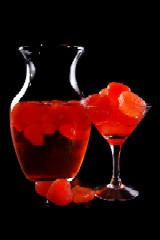 Edwin Perkins, the discoverer of Kool-Aid, was a dreamer. He realized his dream of becoming a successful self-employed individual in 1927 with his discovery of Kool-Aid in Hastings, Nebraska.
Edwin Perkins, the discoverer of Kool-Aid, was a dreamer. He realized his dream of becoming a successful self-employed individual in 1927 with his discovery of Kool-Aid in Hastings, Nebraska. Smarter Students: Research indicates that fruit containing lots of potassium can make students more alert. So technically, the key to acing that difficult calculus test, SATs, or GREs could be a handful of ripe bananas.
Smarter Students: Research indicates that fruit containing lots of potassium can make students more alert. So technically, the key to acing that difficult calculus test, SATs, or GREs could be a handful of ripe bananas. Here are some facts about the blue crab that are interesting enough to know.
Here are some facts about the blue crab that are interesting enough to know. Have you ever wondered about holiday spices? How are they important? And what are they used for? Can we live without them? Not if you love pumpkin pie, you can’t!
Have you ever wondered about holiday spices? How are they important? And what are they used for? Can we live without them? Not if you love pumpkin pie, you can’t! Citrus x limon, better known as the lemon is a citrus tree primarily grown in Mediterranean countries such as Italy and Spain, but also is grown commercially in the United States, India and Brazil as well as some other tropical and subtropical locales. The following factual offerings provide a vast array of information about growing lemons, harvesting lemons, and using lemons for various household purposes.
Citrus x limon, better known as the lemon is a citrus tree primarily grown in Mediterranean countries such as Italy and Spain, but also is grown commercially in the United States, India and Brazil as well as some other tropical and subtropical locales. The following factual offerings provide a vast array of information about growing lemons, harvesting lemons, and using lemons for various household purposes. Who ever says that the U.S. isn’t a place famous for introducing any type of food to the world never heard of the ice cream cone. Anyone who attended the World’s Fair in St. Louis Missouri in 1904 witnessed something historical … if they sampled an ice cream cone.
Who ever says that the U.S. isn’t a place famous for introducing any type of food to the world never heard of the ice cream cone. Anyone who attended the World’s Fair in St. Louis Missouri in 1904 witnessed something historical … if they sampled an ice cream cone.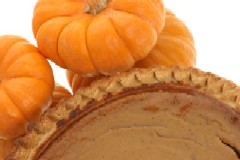 I love pumpkin pie, but most people don’t. What is wrong with some people? How can anyone not like pumpkin pie?
I love pumpkin pie, but most people don’t. What is wrong with some people? How can anyone not like pumpkin pie?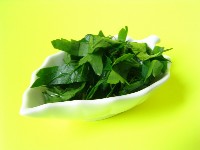 It doesn’t take much research to learn that a diet based on fast foods makes one feel sluggish while eating a healthier diet results in more energy and overall health. Some foods are packed with healthful benefits causing researchers to term them as healing foods. The following facts discuss various foods that help ward away illness and promote a healthier state of being.
It doesn’t take much research to learn that a diet based on fast foods makes one feel sluggish while eating a healthier diet results in more energy and overall health. Some foods are packed with healthful benefits causing researchers to term them as healing foods. The following facts discuss various foods that help ward away illness and promote a healthier state of being. A cookie a small usually sweet portable snack. Every country has is own traditional version. The concept can be traced back to Persia in the 7th century AD.
A cookie a small usually sweet portable snack. Every country has is own traditional version. The concept can be traced back to Persia in the 7th century AD. Chocolate could well be called the food of gods and kings. Early Mayan writings record pictures of gods with cacao pods and bowls of cacao beans. Elite members of upper Mayan society had ornately carved vessels depicting these same cacao pods. Chocolate drinks were important to Mayan ceremony as well and used to seal contracts and marriages. The Aztecs borrowed Mayan chocolate tradition and also celebrated the primitive confectionary.
Chocolate could well be called the food of gods and kings. Early Mayan writings record pictures of gods with cacao pods and bowls of cacao beans. Elite members of upper Mayan society had ornately carved vessels depicting these same cacao pods. Chocolate drinks were important to Mayan ceremony as well and used to seal contracts and marriages. The Aztecs borrowed Mayan chocolate tradition and also celebrated the primitive confectionary. The First Pizza
The First Pizza The Romans used it in cooking before the birth of Christ and garlic continues to be popular with home cooks and restaurant chefs alike – but what makes this humble bulb such a culinary star?
The Romans used it in cooking before the birth of Christ and garlic continues to be popular with home cooks and restaurant chefs alike – but what makes this humble bulb such a culinary star?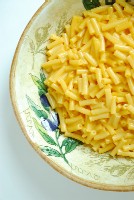 Think that you know everything there is to know about the old stand-by ¦.. Macaroni and Cheese? You might be surprised. Even I didn’t know some of this stuff and I’ve been eating it for years.
Think that you know everything there is to know about the old stand-by ¦.. Macaroni and Cheese? You might be surprised. Even I didn’t know some of this stuff and I’ve been eating it for years. Some are thick. Some are thin. Most are yummy. Milkshakes are the popular
Some are thick. Some are thin. Most are yummy. Milkshakes are the popular  Chips of Cookie History
Chips of Cookie History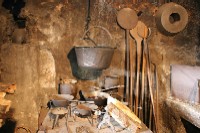 Did you ever wonder why Henry VIII was forever pictured with a turkey leg in his hand? Or maybe why he was so grumpy, especially with his wives? All you need do is look at the menu of a medieval feast, to find out not only why he was so dyspeptic but why he was so distanced from his courtiers…because he became so broad of girth from food and dropsy, that he couldn’t belly up to the table.
Did you ever wonder why Henry VIII was forever pictured with a turkey leg in his hand? Or maybe why he was so grumpy, especially with his wives? All you need do is look at the menu of a medieval feast, to find out not only why he was so dyspeptic but why he was so distanced from his courtiers…because he became so broad of girth from food and dropsy, that he couldn’t belly up to the table. When you eat out at the finest Italian restaurants, one of the first things you notice is that the pasta is perfect, like Baby Bear’s porridge.
When you eat out at the finest Italian restaurants, one of the first things you notice is that the pasta is perfect, like Baby Bear’s porridge.
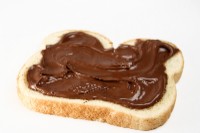 Nutella is like peanut butter, except better. It is a chocolate-hazelnut spread great for bread, fruit, crackers, waffles, or pretzels.
Nutella is like peanut butter, except better. It is a chocolate-hazelnut spread great for bread, fruit, crackers, waffles, or pretzels. If you’re a shrimp fan like I am this will probably interest you. I was amazed to learn some of these little tidbits and at the least; I can look smarter at parties!
If you’re a shrimp fan like I am this will probably interest you. I was amazed to learn some of these little tidbits and at the least; I can look smarter at parties! People love to see strawberry season! Fortunate people lucky enough to live near pick-your-own strawberry patches make picking a family affair but there’s a lot of things I bet you didn’t know about strawberries that will make these luscious summertime yummies, even yummier.
People love to see strawberry season! Fortunate people lucky enough to live near pick-your-own strawberry patches make picking a family affair but there’s a lot of things I bet you didn’t know about strawberries that will make these luscious summertime yummies, even yummier.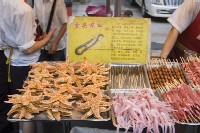 * In Thailand, giant water bugs are served as a treat with chili and rice. Dung beetles are added to curry to give it more flavor.
* In Thailand, giant water bugs are served as a treat with chili and rice. Dung beetles are added to curry to give it more flavor. We all know the common uses for vinegar, like adding it to your fish or french fries to give them some flavor. But there are a lot of uses for the stinky liquid that many folks do not know.
We all know the common uses for vinegar, like adding it to your fish or french fries to give them some flavor. But there are a lot of uses for the stinky liquid that many folks do not know. George Washington Carver was an agricultural chemist who discovered over 300 uses for peanuts. He made the first peanut butter in 1880, but believing that food was a gift from God, he never applied for a patent.
George Washington Carver was an agricultural chemist who discovered over 300 uses for peanuts. He made the first peanut butter in 1880, but believing that food was a gift from God, he never applied for a patent.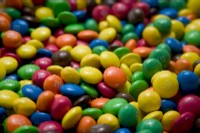 * M&Ms were invented after Forrest Mars, the company’s founder, saw soldiers eating pellet sized snacks out of a long tube during the Spanish Civil War.
* M&Ms were invented after Forrest Mars, the company’s founder, saw soldiers eating pellet sized snacks out of a long tube during the Spanish Civil War. It makes a refreshing brew and is particularly popular with the British, but how much do you know about tea?
It makes a refreshing brew and is particularly popular with the British, but how much do you know about tea?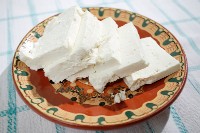 Yes, it’s great on a Greek salad and good to share with olives and pita wedges, but how much do you really about this quintessentially Greek cheese? Test your knowledge with these fun feta facts.
Yes, it’s great on a Greek salad and good to share with olives and pita wedges, but how much do you really about this quintessentially Greek cheese? Test your knowledge with these fun feta facts.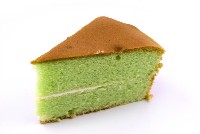 Sponge cake is similar to angel cake-but different. The recipe for sponge cake calls for whole eggs and angel cake calls for only the egg whites.
Sponge cake is similar to angel cake-but different. The recipe for sponge cake calls for whole eggs and angel cake calls for only the egg whites. Grappa is Italy’s brandy. Like Cognac in France or Sherry in Portugal, Grappa has come to symbolize the Italian “joie de vie.” Are you familiar with this potent potable? Test your knowledge with the fun facts about Grappa.
Grappa is Italy’s brandy. Like Cognac in France or Sherry in Portugal, Grappa has come to symbolize the Italian “joie de vie.” Are you familiar with this potent potable? Test your knowledge with the fun facts about Grappa. Today, we can barely live without packaged frozen food, but this ubiquitous food staple, as we know it, is only seventy-five years old. See how many of these frozen food facts you know.
Today, we can barely live without packaged frozen food, but this ubiquitous food staple, as we know it, is only seventy-five years old. See how many of these frozen food facts you know. Did you know¦
Did you know¦